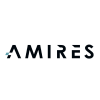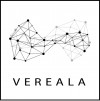The NIA broadly welcomes the EU’s recently published Chemicals Strategy for Sustainability Towards a Toxic-Free Environment. It is a positive step forward towards delivering the Green Deal and the strategy highlights the importance of the chemicals sector overall and the fact that Europe already has within REACH one of the most comprehensive regulatory frameworks in the world. The Strategy lays out more than fifty actions that will have a direct impact on the chemicals sector and seeks to present a roadmap to help industry produce and use safe and sustainable chemicals.
Commenting on the Strategy NIA Director General Claire Skentelbery said, “The NIA welcomes the publication of the new Chemicals Strategy for Sustainability Towards a Toxic-Free Environment. Europe has led the world in its introduction of robust and comprehensive chemicals regulation. It is good to see that the Commission recognises the role that the chemicals sector plays within the industrial landscape and the importance it will have in delivering the Green Deal. Within Europe we must continue to support our chemicals sector and the NIA will continue to help its members bring innovative, safe and sustainable nanomaterials and nano-enabled products to the market. The NIA has been asking for clarification on the use of the nanomaterial definition across legislative frameworks for a number of years and we are really pleased to see that reflected in the Strategy.”
For the NIA members, the main points of interest are:
- The transition to chemicals that are safe and sustainable by design. Nanomaterials have taken a strong lead in the area of safe-by-design and several EU funded projects have helped to develop tools and methods that can be used to implement safe-by-design. However, as the Strategy recognises, frontrunners in this area have encountered technical and financial barriers that need to be overcome. The NIA looks forward to seeing how the Commission will support industry in the implementation of safe and sustainable by design chemicals and ensure that it is closely linked to regulatory compliance.
- Use of coherent terminology to define chemicals. As the Strategy notes this is a particular concern around nanomaterial. The NIA would like to ensure that its members’ interests are not impacted by the confusion between engineered and incidental nanomaterials which continues to occur in instances such as the use of the term ‘nanoplastic’ (see the NIA 'Nanoplastics' position paper).
- The Strategy suggests that the Commission will review the definition of nanomaterial to ensure that it is consistently used across legislation. This is very welcome and will help industry to ensure that it is able to meet its requirements under all legislative framework. More details will be needed, however, to ensure that the definition remans consistent with the REACH definition of nanoforms. The NIA would also expect that any new definition of nanomaterial will be based on robust scientific evidence and in consultation with industry to ensure that the EU benefits from the investments made in nanoscience over the last two decades which are having a positive impact on the European economy.



















